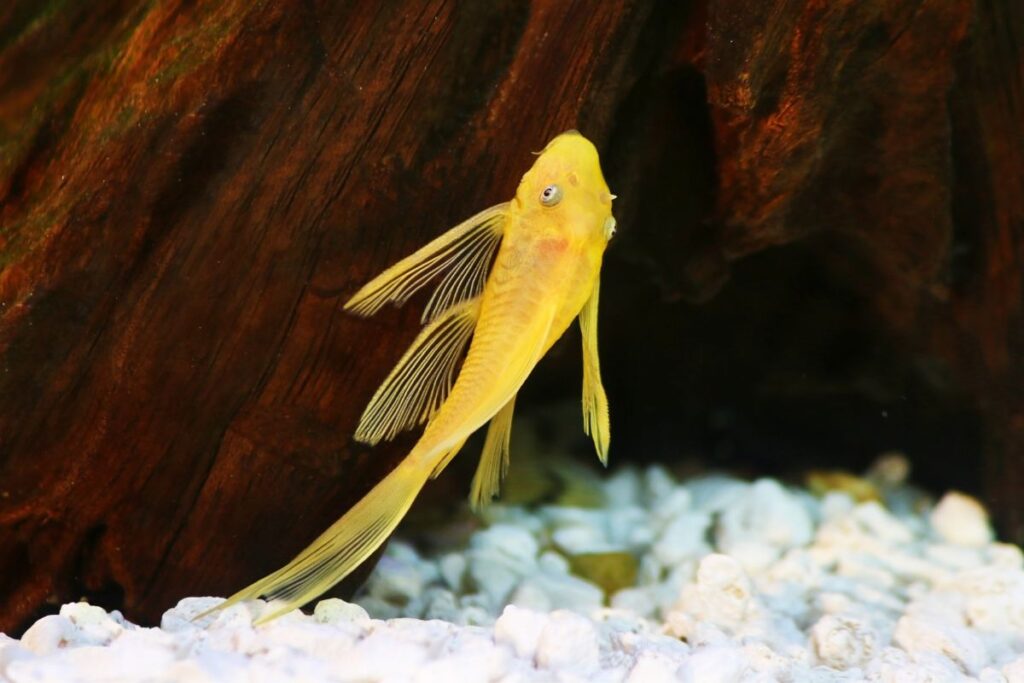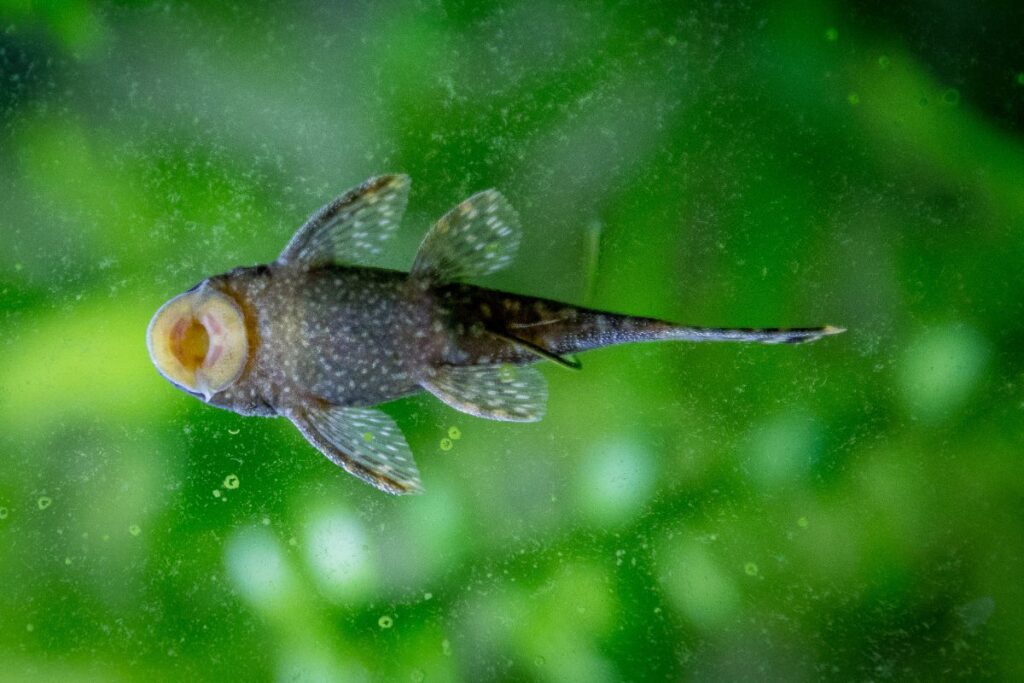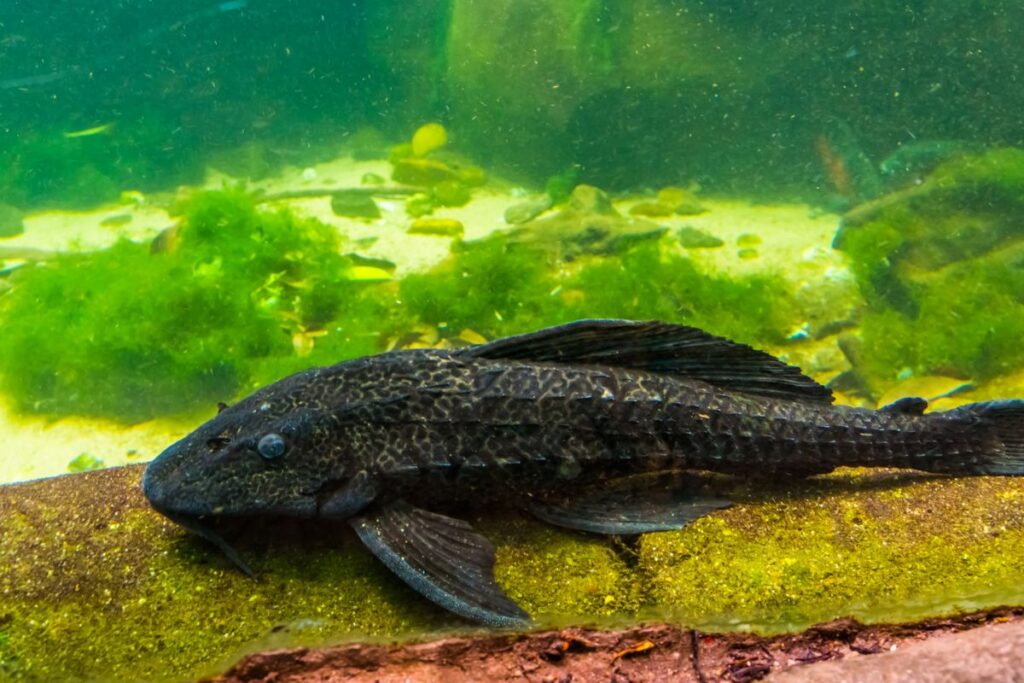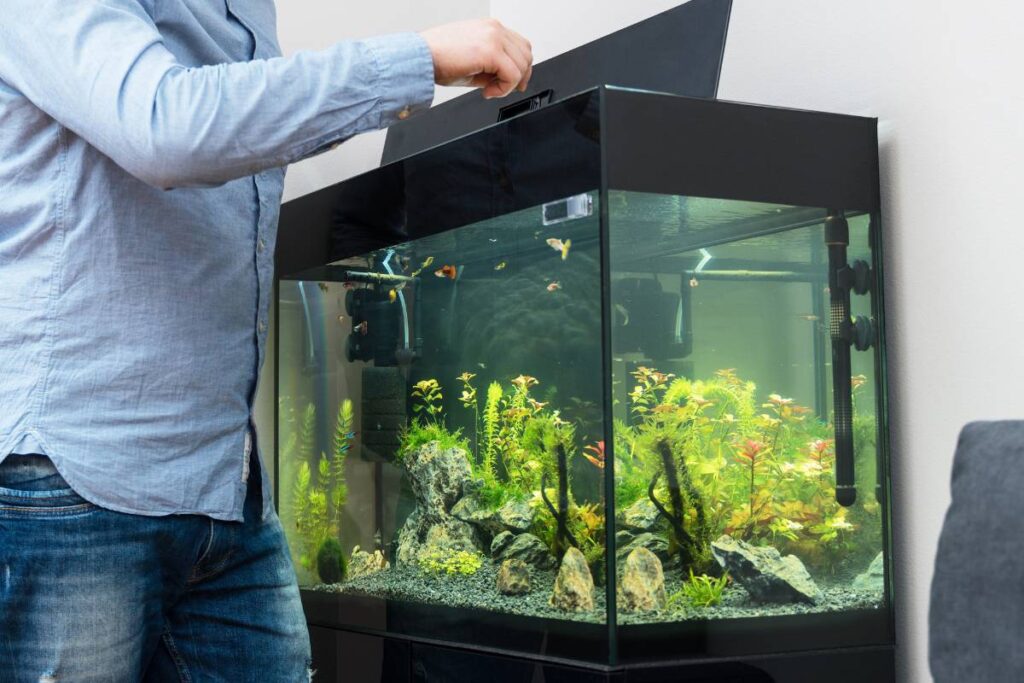If you’re a proud owner of a pleco, you know how important it is to take care of your fish. One of the most common questions we get from pleco owners is how to tell if their fish is getting enough to eat. As a pleco owner myself, I understand how worrisome it can be to wonder if your fish is getting the nutrients they need to thrive.
Fortunately, there are a few signs you can look for to determine if your pleco is getting enough to eat. From their behavior to the appearance of their body, there are several clues that can help you ensure your fish is healthy and well-fed.
You can tell if your pleco is getting enough to eat by observing its behavior and appearance. A healthy pleco will be active, have a round belly, and show interest in food. If the pleco appears lethargic, has a sunken belly, or is not interested in food, it may not be getting enough to eat. It is important to provide a varied and balanced diet for plecos to ensure their health and well-being.
In this article, we’ll cover everything you need to know about how to tell if your pleco is getting enough to eat, so you can rest assured that your fish is happy and healthy.
Whether you’re a new pleco owner or you’ve had your fish for a while, it’s important to know what signs to look for to ensure your fish is getting the nutrients they need. So, let’s dive in and explore how to tell if your pleco is getting enough to eat!

Table of Contents
Understanding the Diet of Plecos
What Do Plecos Eat?
Plecos are primarily herbivores, which means their diet consists mainly of plants. They are known for their love of algae, which they can find on rocks, driftwood, and even the glass of your aquarium.
However, they also enjoy other plant-based foods such as zucchini, cucumber, and spinach. Some plecos may also eat small amounts of meat-based foods such as shrimp or fish flakes, but these should not make up the majority of their diet.
When feeding your pleco, it’s important to provide a variety of foods to ensure they are getting all the nutrients they need.
One way to do this is to offer a mix of fresh vegetables and algae wafers or pellets. You can also try adding different types of vegetables to their diet, such as sweet potato or kale, to keep things interesting.
How Often Should You Feed Your Pleco?
Feeding your pleco can be a bit tricky, as they have a tendency to overeat. It’s important to strike a balance between providing enough food for them to thrive, but not so much that it leads to health problems.
As a general rule, it’s recommended to feed your pleco once a day. However, if you notice that they are not eating all the food you provide, you may need to adjust the amount or frequency of feedings.
It’s also important to remove any uneaten food from the tank after a few hours, as this can lead to water quality issues.
Personally, I have found that my pleco prefers to feed at night, so I make sure to add fresh vegetables and algae wafers to the tank right before I go to bed.
This ensures that he has plenty of food to eat throughout the night, without overfeeding him during the day.
Overall, understanding the diet of plecos is key to ensuring they are healthy and happy in your aquarium. By providing a variety of plant-based foods and feeding them in moderation, you can help your pleco thrive for years to come.
Signs That Your Pleco is Not Getting Enough to Eat
Weight Loss

If your pleco is not getting enough to eat, one of the most noticeable signs is weight loss. You may notice that your pleco appears thinner than usual, and its body may become less rounded.
If you can see the pleco’s bones through its skin, this is a clear indication that it is not getting enough food.
Lethargy
Another sign that your pleco is not getting enough to eat is lethargy. If your pleco is not getting enough food, it may become less active and spend more time resting at the bottom of the tank.
This can be a cause for concern, as plecos are usually quite active and enjoy swimming around their environment.
Hiding or Aggression
If your pleco is not getting enough food, it may become more aggressive towards other fish in the tank. This is because it may feel threatened and want to protect its food source.
Alternatively, it may become more reclusive and spend more time hiding in caves or other hiding places. This is a clear indication that it is not getting enough to eat and is trying to conserve energy.
Poor Health or Appearance
If your pleco is not getting enough to eat, it may start to exhibit signs of poor health or appearance. For example, its fins may become frayed or damaged, and its skin may appear dull or discolored.
It may also develop sores or other skin irritations, which can be a sign of malnutrition.
Personally, I have experienced this with my own pleco. I noticed that it was becoming less active and spending more time hiding in its cave.
When I checked the water parameters, everything seemed fine. It wasn’t until I started paying closer attention to its eating habits that I realised it wasn’t getting enough to eat.
After adjusting its feeding schedule, my pleco became much more active and its overall health and appearance improved.
How to Ensure Your Pleco is Getting Enough to Eat

As a fish owner, I understand the importance of ensuring that my pleco gets enough to eat. Here are a few tips that have worked for me:
Observation and Monitoring
The first step to ensuring that your pleco is getting enough to eat is to observe and monitor its behavior. Plecos are nocturnal creatures, so they tend to be more active at night.
If you notice that your pleco is not coming out of hiding during feeding times, it may be a sign that it is not getting enough to eat. Another thing to observe is the pleco’s body condition.
If it looks thin and emaciated, it could be a sign that it is not getting enough food. On the other hand, if it looks bloated or overweight, it may be getting too much food.
Adjusting Feeding Habits
If you observe that your pleco is not getting enough to eat, you may need to adjust your feeding habits. One thing to consider is the type of food you are feeding your pleco.
Plecos are omnivores and require a balanced diet that includes both plant and animal matter. You may want to try different types of food to see what your pleco prefers.
Another thing to consider is the frequency of feedings. Plecos are grazers and prefer to eat small amounts throughout the day.
You may want to try feeding your pleco smaller amounts more frequently to ensure that it is getting enough to eat.
Supplementing the Diet
If you have tried adjusting your feeding habits and your pleco is still not getting enough to eat, you may need to supplement its diet.
There are a variety of foods and supplements available that can help ensure that your pleco is getting the nutrients it needs. Some options to consider include algae wafers, sinking pellets, and fresh vegetables like zucchini or cucumber.
You can also try adding a calcium supplement to the water to help promote healthy bone growth. In conclusion, ensuring that your pleco is getting enough to eat requires observation, monitoring, and adjusting feeding habits as necessary.
By following these tips and supplementing your pleco’s diet as needed, you can help ensure that your fish stays healthy and happy.
How often should I feed my pleco?

As a pleco owner, you want to ensure that your fish is receiving the right amount of food. The frequency of feeding your pleco is dependent on various factors such as the size of your fish, the type of food, and the water temperature.
Generally, plecos are known to be herbivores and require a varied diet that includes vegetables, algae, and other plant-based foods.
How long can a pleco go without eating?
Plecos can go for several days without food, but it’s not recommended to starve them for long periods. If you’re going away for a few days, you can use an automatic feeder to dispense food.
Alternatively, you can ask a friend or family member to feed your pleco while you’re away. I remember one time when I went on vacation for a week and forgot to arrange for someone to feed my pleco.
When I returned, I found that my fish was weak and emaciated. It took several weeks of feeding it regularly before it regained its strength. From that experience, I learned the importance of ensuring that my pleco has enough food, even when I’m away.
Can plecos survive on just algae?
While plecos are known to consume algae, they require a varied diet to thrive. A diet that consists solely of algae may not provide all the necessary nutrients for your fish.
It’s essential to supplement their diet with other plant-based foods such as cucumber, zucchini, and spinach. In conclusion, feeding your pleco is essential to its overall health and well-being.
The frequency of feeding depends on various factors, and it’s crucial to ensure that your fish has a balanced diet. Remember to supplement their diet with other plant-based foods and avoid overfeeding.
Recommended product for this article:
- Hikari Algae Wafers – These wafers are a great addition to a pleco’s diet as they are specifically formulated for herbivorous fish and contain high levels of algae.
- Fluval Bug Bites Pleco Formula – This fish food is made with high-quality protein and contains a mix of plant-based ingredients that plecos love, including spirulina and kelp.
- Omega One Veggie Rounds – These sinking pellets are a great way to provide your pleco with a mix of plant-based foods, including spinach, spirulina, and kelp.
All of these products are great options for pleco owners looking to provide their fish with a balanced diet. They contain a mix of plant-based ingredients that plecos love and are formulated to provide all the necessary nutrients for a healthy fish.
Conclusion
In conclusion, ensuring that your pleco is getting enough to eat is crucial to its overall health and well-being. As a pleco owner, it’s important to understand their diet and feeding habits, and to observe and monitor their behavior to ensure they are getting the nutrients they need.
By adjusting feeding habits and supplementing their diet as necessary, you can help your pleco thrive for years to come. Remember to provide a balanced diet and avoid overfeeding, and your pleco will be happy and healthy in your aquarium.
“Learn how to keep your pleco healthy and happy with our Pleco Care 101 guide – the ultimate resource for all pleco owners!”
Reference: Wikipedia.
